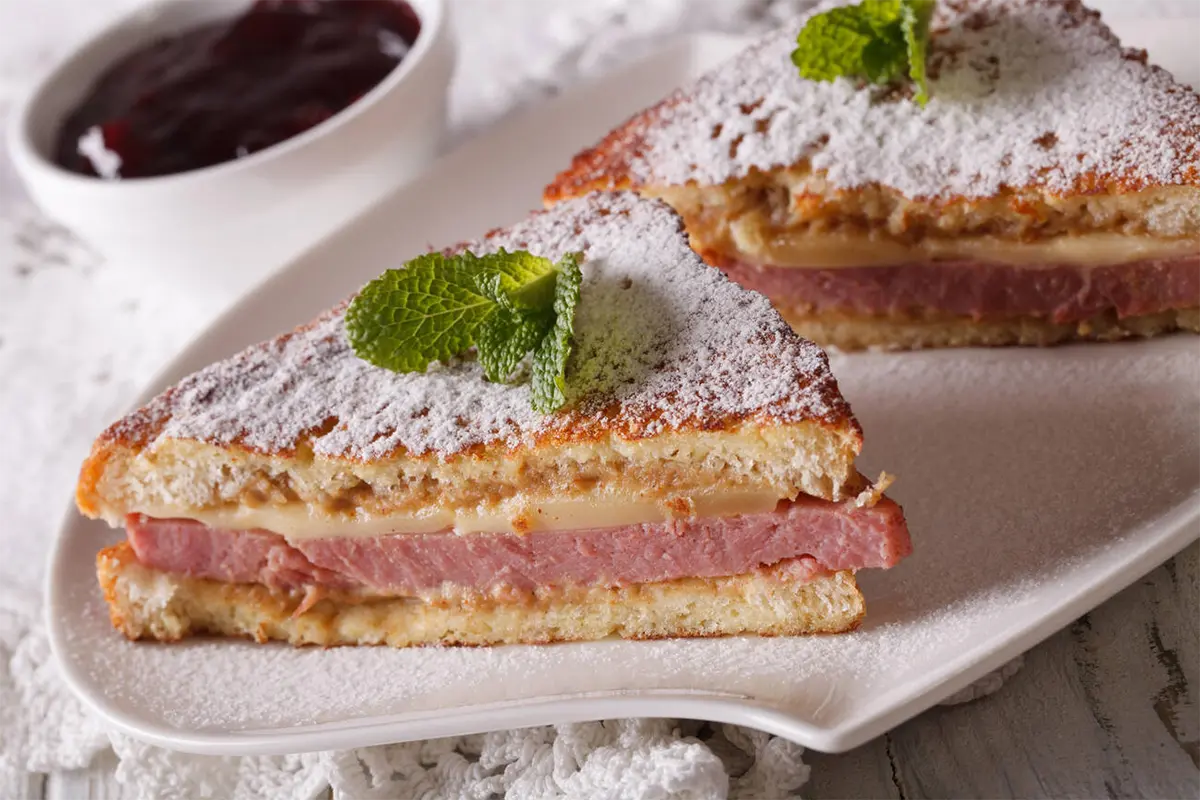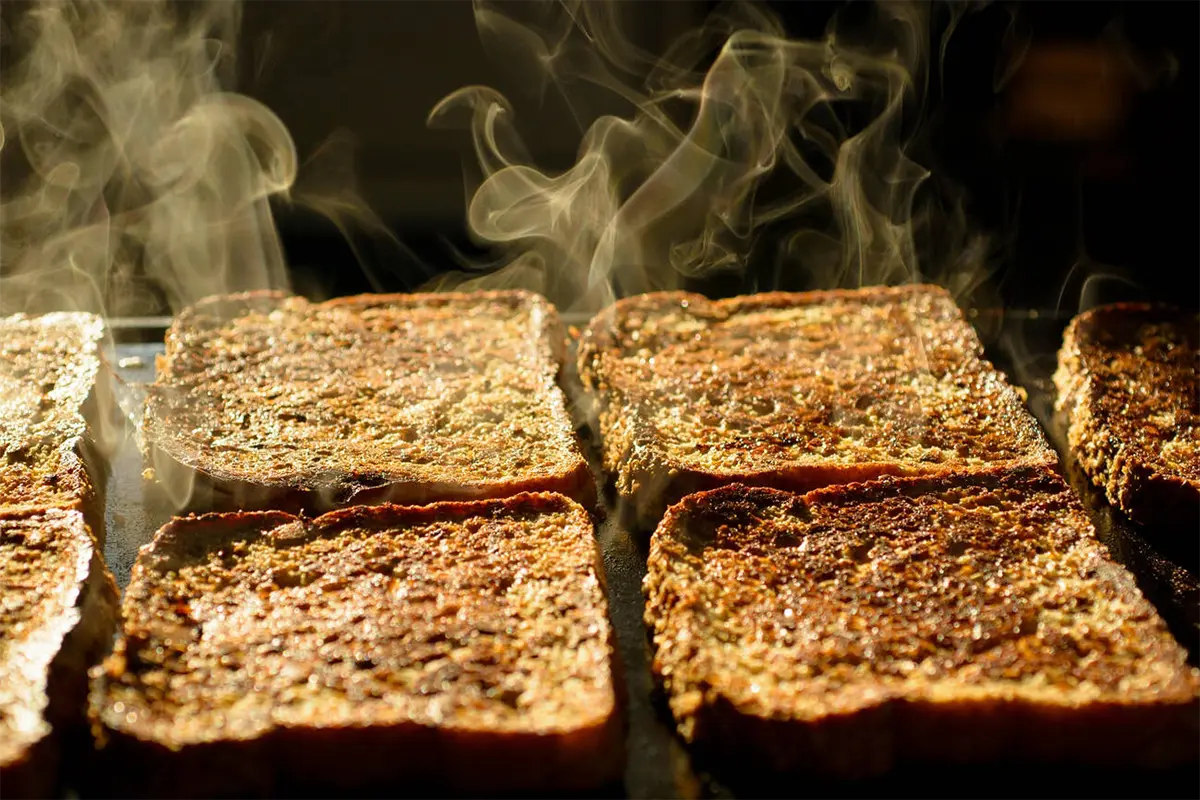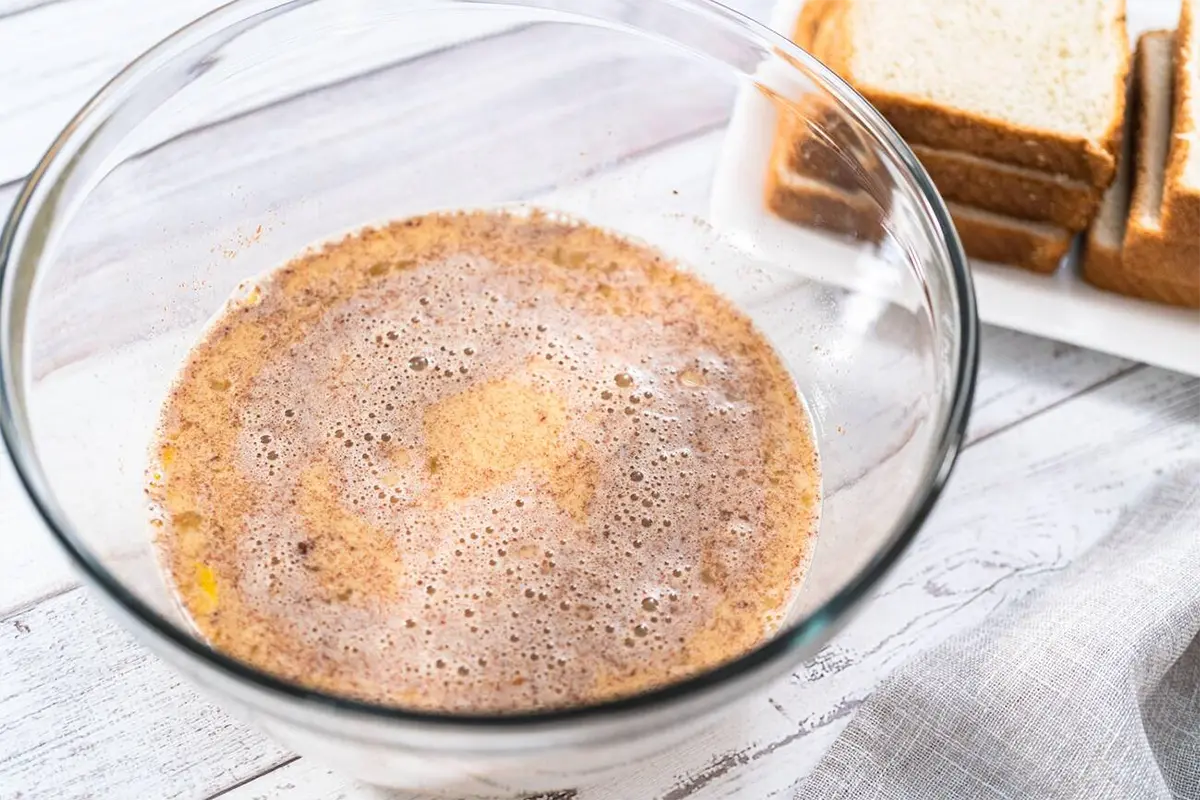Before we embark on our culinary journey, imagine a world where breakfast is not just a meal but an art form. Here, the humble egg and bread unite to create Fluffy French Toast, a dish celebrated worldwide for its versatility and comfort. Additionally, our guide will lead you through the basics, unveiling secrets to a fluffy texture, and exploring beyond to include classic recipes, cinnamon highlights, vegan alternatives, and gluten-free choices. Consequently, are you ready to elevate your breakfast? Let’s dive into the foundation of this beloved dish, ensuring that every bite is a testament to culinary creativity and simplicity.
Understanding the Basics of French Toast
French toast, at its core, epitomizes culinary simplicity and comfort. This beloved dish begins with a fundamental step: soaking slices of bread in a mixture of beaten eggs and milk. Subsequently, these soaked slices are pan-fried until they reach a golden-brown hue, embodying the perfect blend of crispy edges and a soft, custardy center. It’s this delightful contrast that has cemented Fluffy French Toast as a cherished recipe, passed down through generations and celebrated in various cultures around the globe.
Moreover, the versatility of French toast lies in its humble ingredients. By adjusting the type of bread or the components of the egg-milk mixture, one can tailor the dish to suit different palates and occasions. For instance, using denser bread like brioche or challah can elevate the dish, making it more luxurious, while adding spices such as cinnamon or nutmeg to the batter infuses it with warmth and complexity.
Additionally, French toast serves as a canvas for a plethora of toppings, allowing for endless creativity. From the traditional dusting of powdered sugar and a drizzle of maple syrup to more elaborate garnishes like fresh berries, whipped cream, or even savory options like bacon and cheese, the possibilities are boundless.
In essence, French toast represents more than just a breakfast item; it’s a testament to the joy of simple cooking. It showcases how basic ingredients, when combined with a bit of culinary craftsmanship and a dash of creativity, can create a dish that resonates with people across different cultures and walks of life, making it a timeless classic in the world of comfort food.
The Historical Significance of French Toast
Here’s a twist: French toast isn’t French. Its roots go back to ancient Rome, where it was known as ‘Pan Dulcis’. Romans soaked bread in eggs and milk, frying it to create a timeless dish. Over the centuries, Fluffy French Toast has evolved, embracing new flavors and names, showcasing the universality of great food. This evolution highlights how a simple dish can adapt and thrive across different cultures and epochs, continually appealing to new generations of food lovers.
Key Ingredients Overview
Here’s a twist: French toast isn’t French. Its roots go back to ancient Rome, where it was known as ‘Pan Dulcis’. Romans soaked bread in eggs and milk, frying it to create a timeless dish. Over the centuries, Fluffy French Toast has evolved, embracing new flavors and names, showcasing the universality of great food. This evolution highlights how a simple dish can adapt and thrive across different cultures and epochs, continually appealing to new generations of food lovers.

The Secret to Fluffiness
But we’re just warming up. As we delve further, we’ll explore the science behind Fluffy French Toast, optimal bread types, and perfecting the batter. So, tie on your apron. Breakfast is more than the day’s first meal—it’s a new beginning, a moment to cherish, and an opportunity to create something beautiful with Fluffy French Toast.
Let’s dive deeper into the art of making French toast, focusing on what makes it so delightfully fluffy. Fluffiness isn’t just about luck; it’s a science. By understanding the role of each ingredient, you can transform a simple breakfast into a cloud-like experience. Now, let’s explore the secrets behind that irresistible fluffiness of Fluffy French Toast.
The Secret to Fluffiness
Why Flour Makes a Difference
You might wonder, “Flour in French toast?” Absolutely! While not traditional, a bit of flour in the batter can work wonders. It thickens the mixture, ensuring a better coating on the bread. This slight change gives the toast an extra lift, making each bite more tender. So, a tablespoon or two can elevate your dish from good to gourmet.
The Role of Eggs in the Batter
Eggs are the backbone of Fluffy French Toast. They bind the milk and flour, creating a rich batter. But, the technique matters too. Whisking the eggs thoroughly with the milk and flour introduces air. This air expands when heated, contributing to the fluffiness. Moreover, the eggs cook into a delicate custard inside the bread, adding to the soft texture. Remember, the quality of your eggs can make a big difference. Fresh, high-quality eggs can enhance the flavor and texture of your Fluffy French Toast.
In essence, achieving the perfect fluffiness in French toast is about understanding the science behind each ingredient. Flour thickens the batter, while eggs bind and add air. Together, they create a fluffy masterpiece. So next time you’re in the kitchen, remember these tips, and you’re sure to impress with your culinary skills in making Fluffy French Toast.
Let’s turn our attention now to choosing the right bread for French toast, a step as crucial as mastering the batter. Indeed, the bread acts as the canvas for our culinary masterpiece, and not just any loaf will do. So, buckle up as we slice into the details of picking the perfect bread for a breakfast delight that’s bound to impress.
Bread: The Canvas of French Toast
Types of Bread Suitable for French Toast
First off, thickness matters. Opt for bread that’s sturdy enough to soak up the batter without falling apart. Brioche and challah are top choices, thanks to their rich flavor and tender crumb. However, don’t shy away from experimenting with whole grain or artisanal loaves for a heartier texture and nuanced taste. Each type adds its own character to the dish, enriching your breakfast experience.
Why Thickness Matters
Moreover, the thickness of your slices is key. Too thin, and they might disintegrate; too thick, and the middle may remain uncooked. About an inch thick strikes the perfect balance, ensuring each bite is soaked through yet cooked to perfection. This attention to detail transforms the simple act of frying bread into an art form, elevating your French toast to new culinary heights.
By choosing the right bread and slicing it just so, you set the stage for a French toast that’s not only visually appealing but also a feast for the senses. This foundational choice influences the texture, flavor, and overall success of your dish, proving once again that good cooking starts with selecting quality ingredients. Now, with the ideal bread in hand and our batter ready, we’re all set to craft French toast that’s truly unforgettable.
Now, we’re stepping into the kitchen with everything we need to make French toast. This part of our journey is hands-on, guiding you through each step from batter prep to the final, golden-brown result. Ready to cook? Let’s get started.

Crafting the Perfect French Toast
Preparing the Batter
Firstly, whisk your eggs, milk, and flour together. Remember, a smooth batter is key. So, really give it your all here. Then, stir in the sugar, vanilla, and a pinch of salt. This mix should smell as good as it tastes.
The Soaking Process
Next up, soaking the bread. You’ll want each piece thoroughly drenched but not falling apart. So, dip quickly but with care. Let the excess batter drip off before you cook. This step ensures that lovely, custard-like interior we all adore.
Cooking to Perfection
Now, to the stove! Cook your soaked slices on a preheated, buttered skillet or griddle. Aim for a medium heat. Too hot, and the outside burns before the inside can dream of cooking. Cook each side until golden. Ah, the aroma!
Tips for Golden-Brown Toast
For that coveted golden-brown crust, don’t crowd the pan. Give each slice room to breathe. This way, they cook evenly and get that perfect, crispy edge.
Serving Suggestions
Toppings and Pairings
Finally, serve your French toast with flair. Fresh fruit, a dollop of yogurt, or a drizzle of maple syrup can turn a simple breakfast into a feast. Get creative! Your French toast is a canvas for flavors.
There you have it, a step-by-step guide to the ultimate French toast. With these tips, you’re not just making breakfast. You’re creating moments, memories, and maybe even a new morning tradition.
Crafting the Perfect French Toast
Preparing the Batter Firstly, start by creating a rich and flavorful batter. Crack three large eggs into a mixing bowl and whisk them vigorously until they turn pale yellow. Then, pour in a cup of whole milk, making sure it blends well with the eggs. Next, add a teaspoon of vanilla extract for a sweet aroma and a pinch of cinnamon for a spicy kick. Finally, whisk all the ingredients together until the mixture is smooth. Now, your batter is ready for the next step.
The Soaking Process
Secondly, take thick slices of day-old bread for this crucial step; they absorb the batter better without falling apart. Gently dip each slice into the batter, letting it soak for about 30 seconds on each side. Make sure the bread is fully coated but not overly soggy. This balance is key to achieving the perfect texture in your French toast.
Cooking to Perfection
Tips for Golden-Brown Toast
Moreover, heat a non-stick skillet or griddle over medium heat. Brush it with butter, just enough to coat the surface. Subsequently, place the soaked bread slices on the skillet. Cook them for about 3-4 minutes on each side. Look for a golden-brown crust that’s slightly crispy on the edges. It’s important to keep your heat moderate to avoid burning the toast. This technique ensures a deliciously golden exterior with a soft, custardy middle.
Serving Suggestions
Toppings and Pairings
Furthermore, serve your French toast hot from the skillet. For a classic touch, dust it with powdered sugar and drizzle it with maple syrup. Adding fresh berries or sliced bananas can provide a refreshing twist. Alternatively, for something more indulgent, try a dollop of whipped cream or a scoop of vanilla ice cream. Pairing your French toast with a cup of hot coffee or freshly squeezed orange juice completes the breakfast experience. Thus, you can enjoy the perfect balance of flavors and textures in each bite.
Avoiding Common French Toast Mistakes
Preventing Soggy French Toast
Firstly, to prevent soggy French toast, select the right bread. Thick, sturdy slices like brioche or challah work best. Secondly, avoid over-soaking. Dip each slice briefly in the batter, ensuring it’s moist but not drenched. Lastly, ensure your skillet is hot before adding the bread. A pre-heated skillet helps to start the cooking process immediately, sealing the exterior.
Achieving the Right Crispness

To achieve the perfect crispness, first, use medium heat. It allows the toast to cook through without burning the outside. Then, add a touch of butter to the skillet just before the bread. Butter enhances flavor and aids in browning. Lastly, flip only once. Letting each side cook thoroughly before flipping ensures a crispy exterior with a soft interior.
Elevating Your French Toast
Customizing Your Batter
Beginning with the batter is the first step to elevate your French toast. By simply mixing in a tablespoon of orange zest, you can add a refreshing citrus note that brightens the dish. Alternatively, replacing cinnamon with cardamom offers a unique twist, introducing a subtle, aromatic warmth that’s less common but equally delightful. Moreover, a splash of heavy cream can significantly enhance the richness of the batter, lending your French toast a decadently creamy texture that feels luxurious with each bite.
Furthermore, experimenting with sweeteners can also transform your batter. A drizzle of maple syrup or a spoonful of honey not only sweetens the mixture but also infuses it with their distinctive flavors, setting your French toast apart from the usual. Additionally, for those who enjoy a hint of nuttiness, a dash of almond extract or a sprinkle of finely chopped nuts can introduce a new layer of flavor and texture that complements the softness of the bread beautifully.
In essence, customizing your batter is all about embracing creativity and personal taste. Whether it’s by introducing new flavors like citrus and spices, enriching the mixture with heavy cream, or experimenting with different sweeteners and extracts, these simple modifications can have a profound impact on the final dish. Such tailored adjustments not only enhance the sensory experience of French toast but also transform it into a personalized treat that reflects individual preferences, making each bite a truly unique culinary delight.
Creative Toppings and Fillings
Moreover, exploring creative toppings can elevate your dish. Consider dollops of mascarpone cheese and a drizzle of honey for a decadent finish. Alternatively, sandwich slices of French toast with a layer of Nutella or fruit compote for a delightful twist. Finally, a sprinkle of toasted nuts adds a pleasing crunch that contrasts the softness of the bread.
Frequently Asked Questions
Can I Make French Toast Without Milk?
Yes, you can! For a dairy-free version, use almond or soy milk. These alternatives keep the batter light and add a subtle, nutty flavor.
How to Make Vegan French Toast?
To make vegan French toast, swap eggs for a mashed banana or a flaxseed mixture. Combine these with your choice of plant-based milk. This switch maintains the batter’s binding property and adds a unique taste.
Best Bread for French Toast?
Brioche is the top pick for its buttery richness and sturdy texture. Challah, with its slight sweetness and soft crumb, also makes an excellent choice. Thick slices of either bread soak up the batter well, leading to a deliciously indulgent French toast.
Mastering French Toast at Home
Recap of Key Takeaways
To start, selecting the right bread, like brioche or challah, makes a huge difference. Also, the batter, a blend of eggs and milk, is the foundation. Remember, the soaking time is crucial; too short, and the toast is dry; too long, and it gets soggy. Cooking on medium heat ensures a golden crust without burning.
Encouragement to Experiment
Finally, don’t hesitate to experiment. Add spices to the batter for a flavor twist or top with unique combinations. Each variation can make your French toast uniquely yours. So, go ahead, and get creative in your kitchen
LSI and NLP Keywords:
- Classic French toast recipe, cinnamon French toast, vegan French toast, milk substitutes, egg alternatives, dairy-free options, fluffy texture tips, best bread for French toast, sweet breakfast dishes, savory French toast variations, easy breakfast recipes, breakfast comfort foods, nutritional information, customizing flavor profiles, brunch recipes, holiday breakfast ideas, gluten-free options, cultural variations of French toast, history of French toast, kid-friendly breakfast.
External Links:
- Academy of Nutrition and Dietetics – Eat Right – Anchor text: “nutritional insights on breakfast dishes”
- USDA Choose MyPlate – Anchor text: “guidelines for a balanced breakfast”
-
Food Network – Recipes – Anchor text: “diverse culinary recipes and techniques

